Abstract
Interactions between 23Na+ and soluble RNA in aqueous solution are studied with the use of 23Na nuclear magnetic resonance. At low concentrations of NaCl, the interactions obey a simple equilibrium model with a formation constant log (Kf)3 = 2.8 ± 0.3. The relaxation rate of the bound sodium is found to be T1B-1 = 222 ± 19 sec-1 compared to that of free sodium T1F-1 = 17.5 sec-1. At high NaCl concentrations, the system deviates from the model, possibly owing to aggregation of the soluble RNA.
Full text
PDF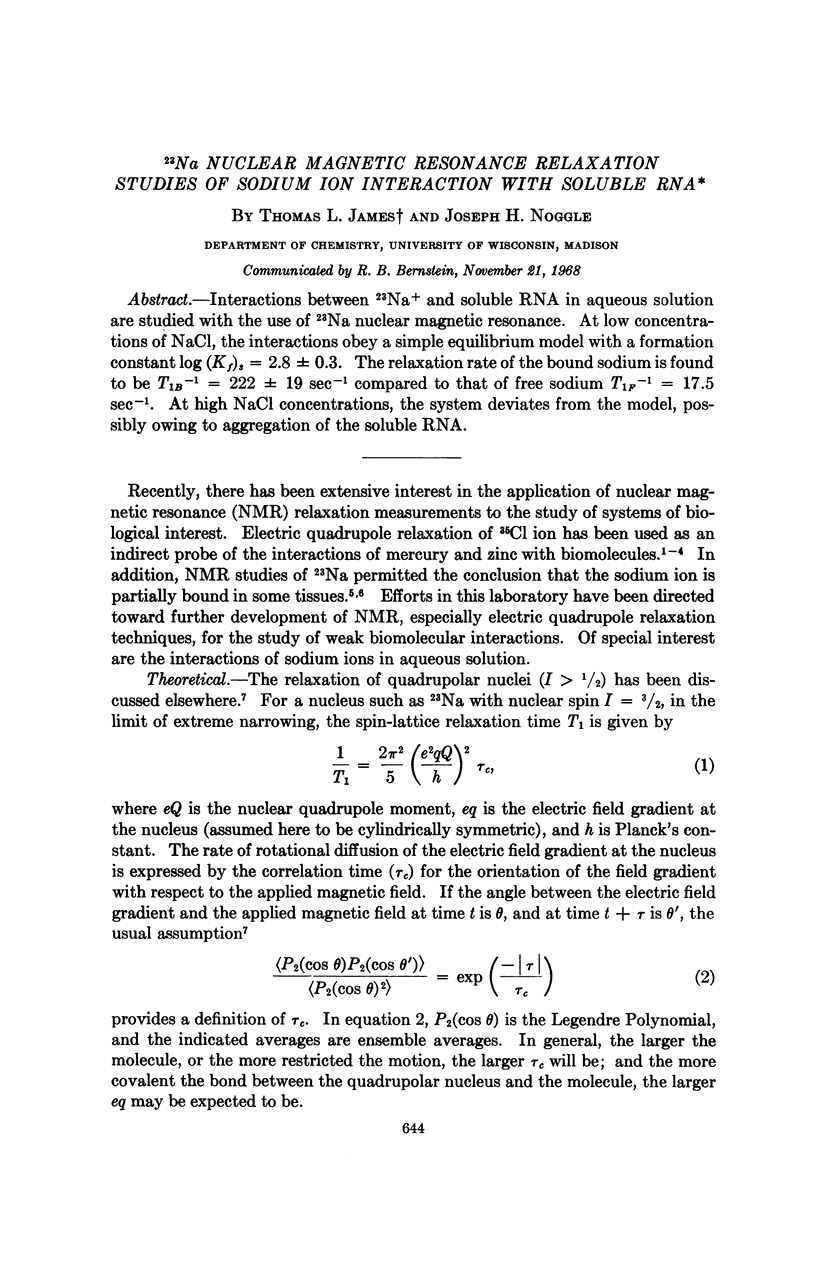
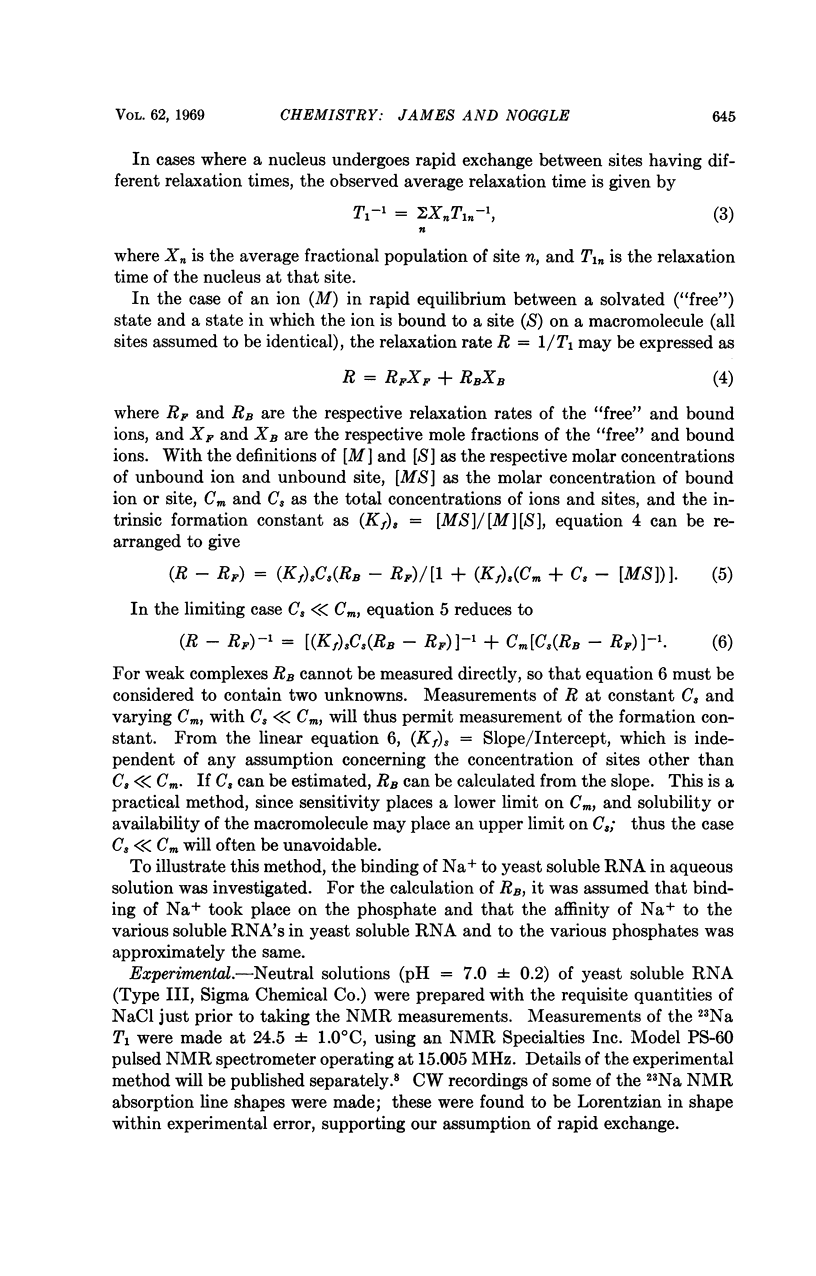
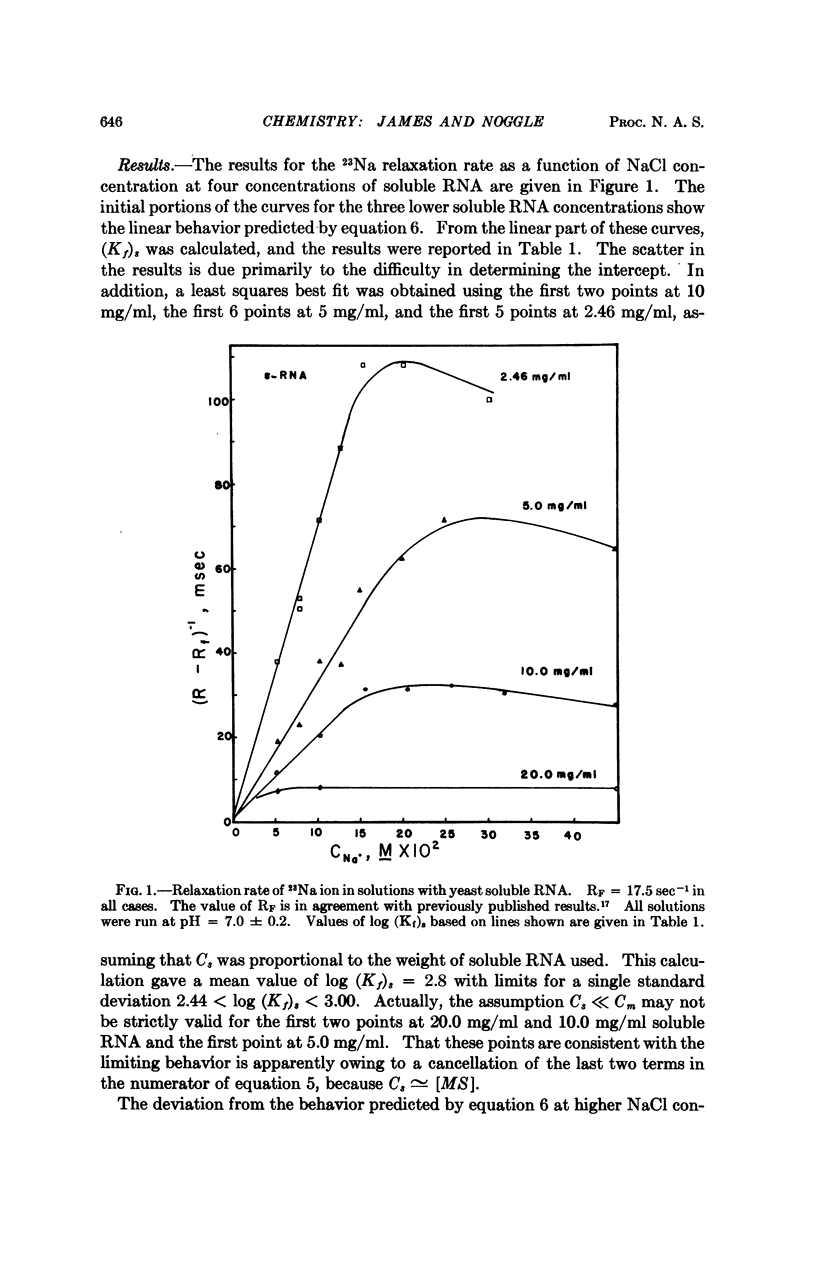
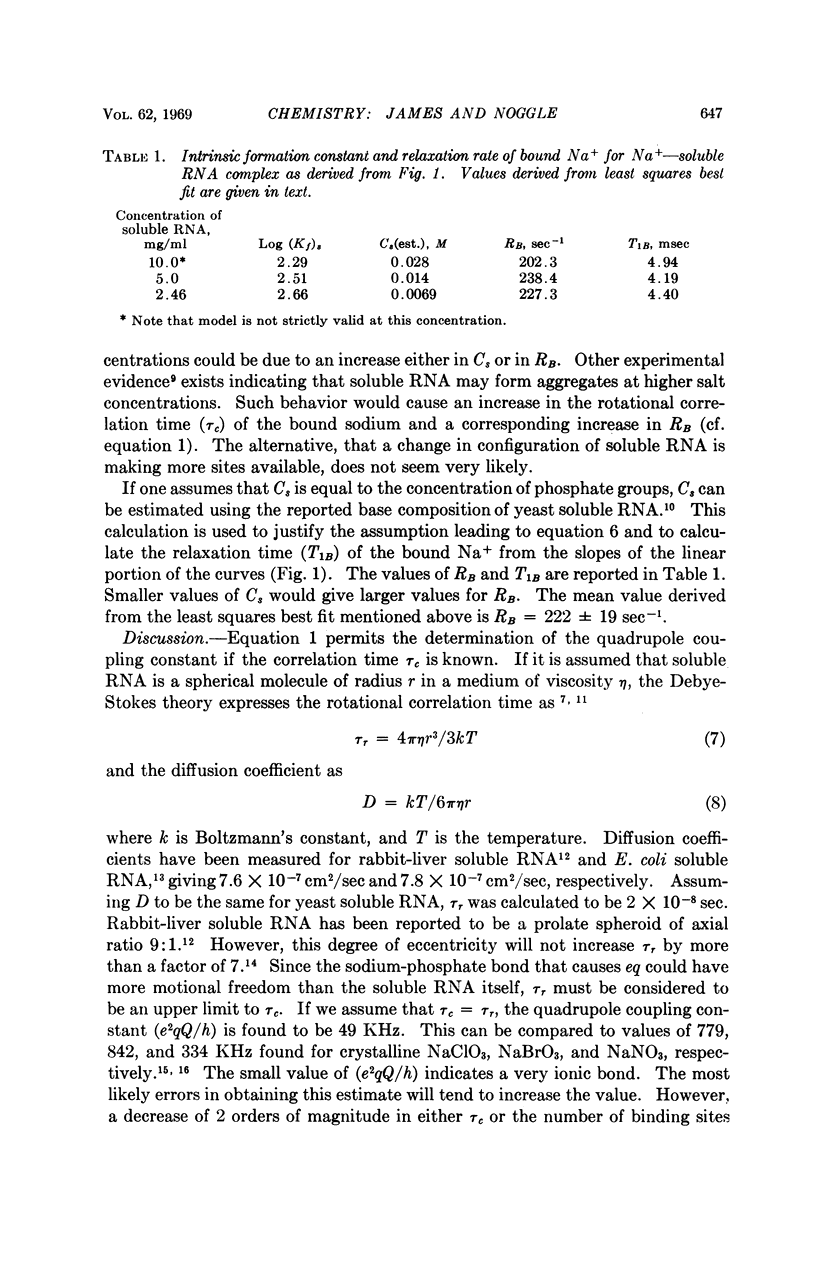
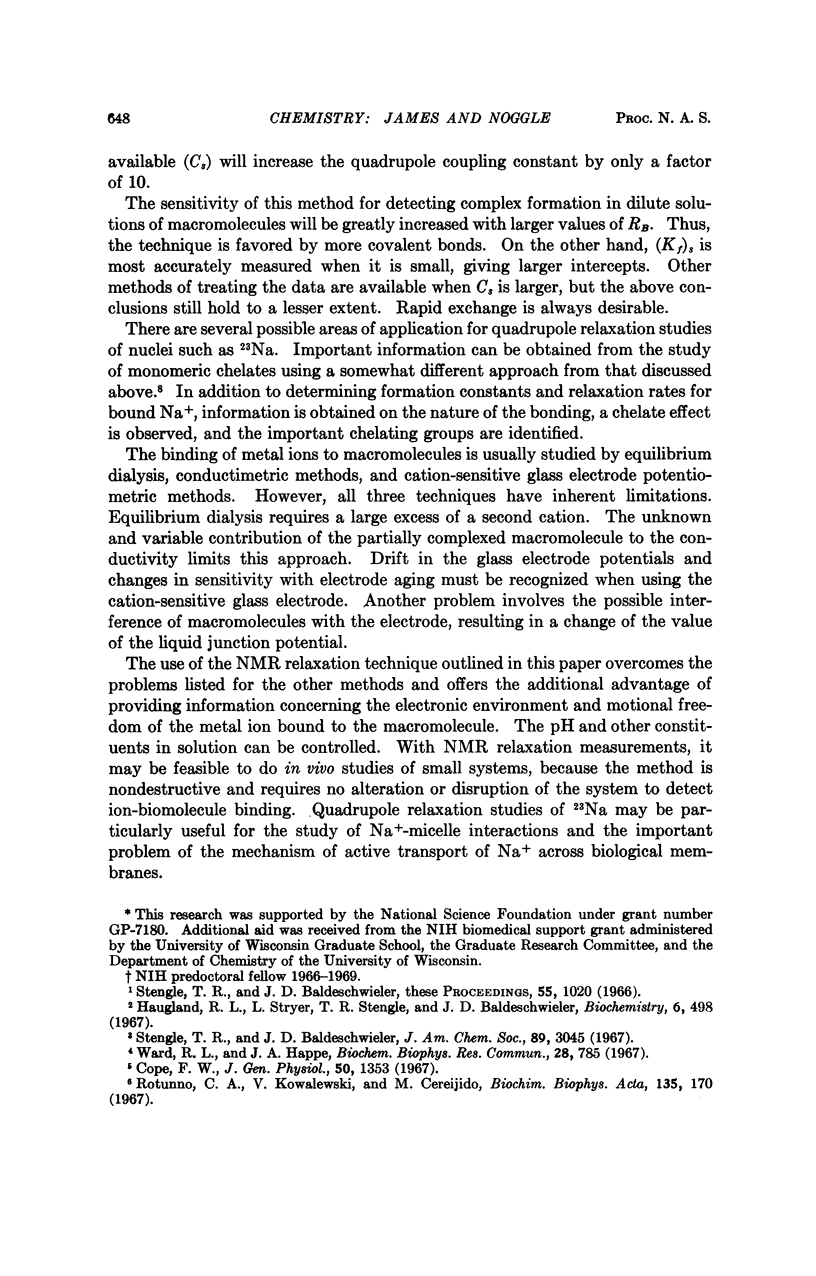
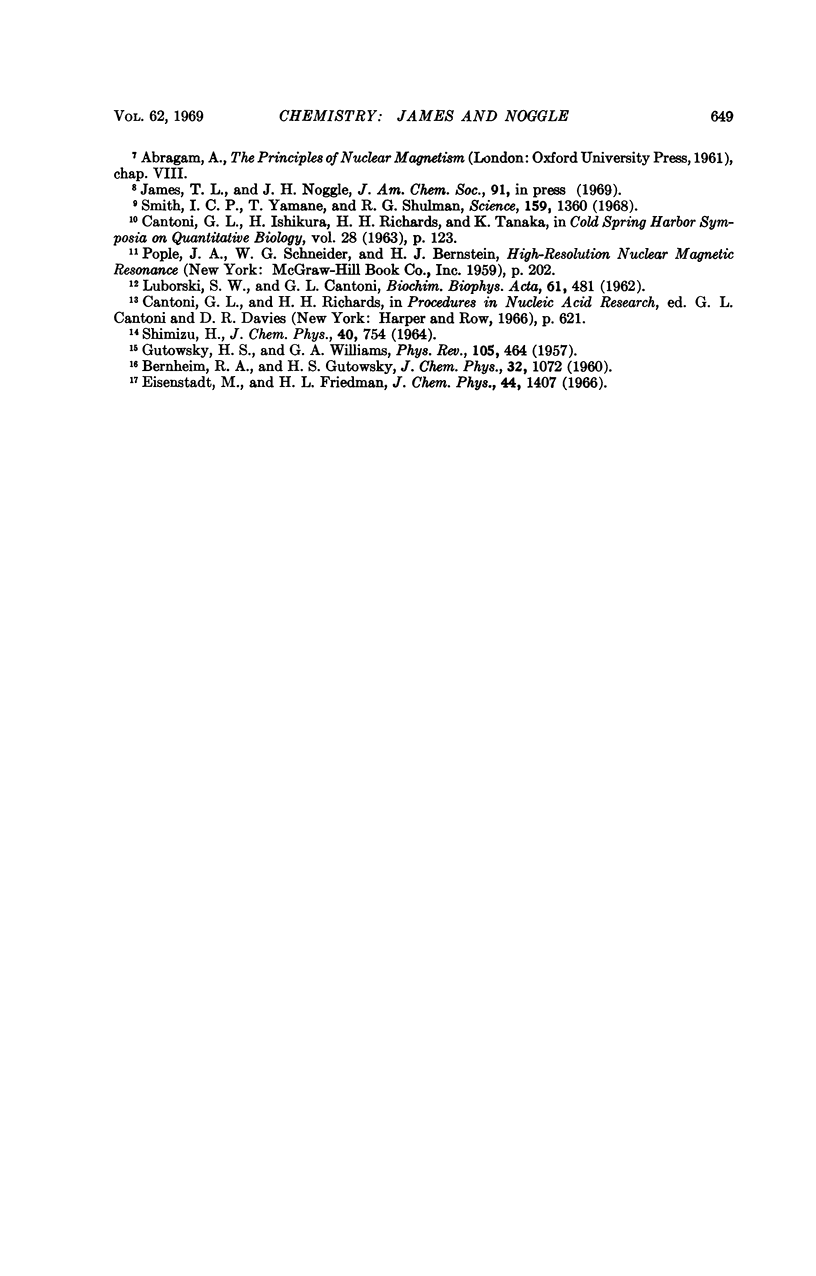
Selected References
These references are in PubMed. This may not be the complete list of references from this article.
- Cope F. W. NMR evidence for complexing of Na+ in muscle, kidney, and brain, and by actomyosin. The relation of cellular complexing of Na+ to water structure and to transport kinetics. J Gen Physiol. 1967 May;50(5):1353–1375. doi: 10.1085/jgp.50.5.1353. [DOI] [PMC free article] [PubMed] [Google Scholar]
- Haugland R. P., Stryer L., Stengle T. R., Baldeschwieler J. D. Nuclear magnetic resonance studies of antibody-hapten interactions using a chloride ion probe. Biochemistry. 1967 Feb;6(2):498–502. doi: 10.1021/bi00854a018. [DOI] [PubMed] [Google Scholar]
- Rotunno C. A., Kowalewski V., Cereijido M. Nuclear spin resonance evidence for complexing of sodium in frog skin. Biochim Biophys Acta. 1967 Feb 1;135(1):170–173. doi: 10.1016/0005-2736(67)90022-3. [DOI] [PubMed] [Google Scholar]
- Smith I. C., Yamane T., Shulman R. G. Proton magnetic resonance of transfer RNA. Science. 1968 Mar 22;159(3821):1360–1361. doi: 10.1126/science.159.3821.1360. [DOI] [PubMed] [Google Scholar]
- Stengle T. R., Baldeschwieler J. D. Halide ions as chemical probes for NMR studies of proteins. Proc Natl Acad Sci U S A. 1966 May;55(5):1020–1025. doi: 10.1073/pnas.55.5.1020. [DOI] [PMC free article] [PubMed] [Google Scholar]
- Stengle T. R., Baldeschwieler J. D. Halide ions as probes for nuclear magnetic resonance studies of proteins. The sulfhydryl groups of hemoglobin. J Am Chem Soc. 1967 Jun 7;89(12):3045–3050. doi: 10.1021/ja00988a044. [DOI] [PubMed] [Google Scholar]
- Ward R. L., Happe J. A. 35Cl NMR studies of zinc adenosine diphosphate complexes. Biochem Biophys Res Commun. 1967 Sep 7;28(5):785–790. doi: 10.1016/0006-291x(67)90386-5. [DOI] [PubMed] [Google Scholar]


